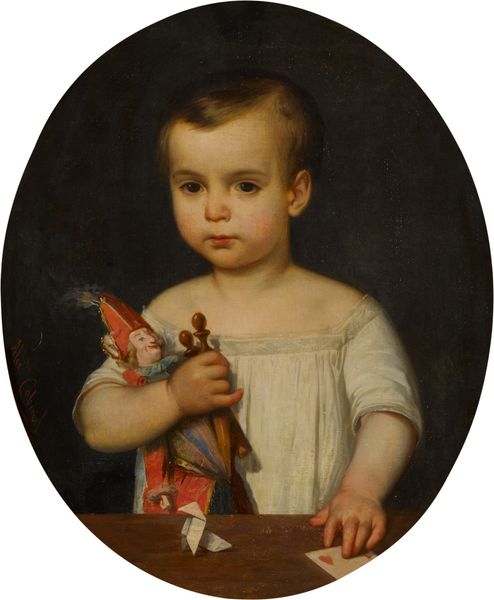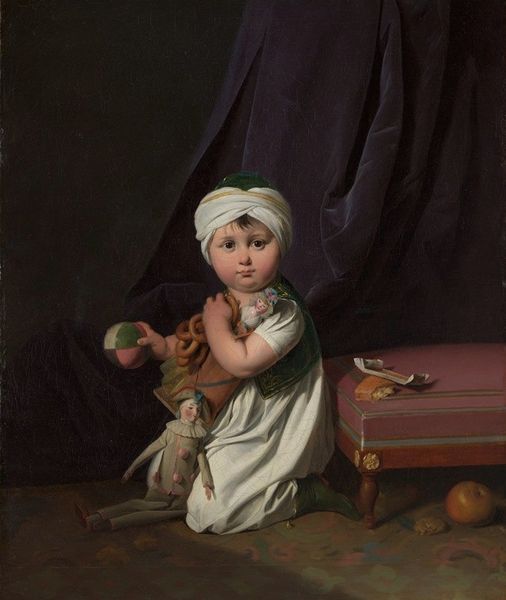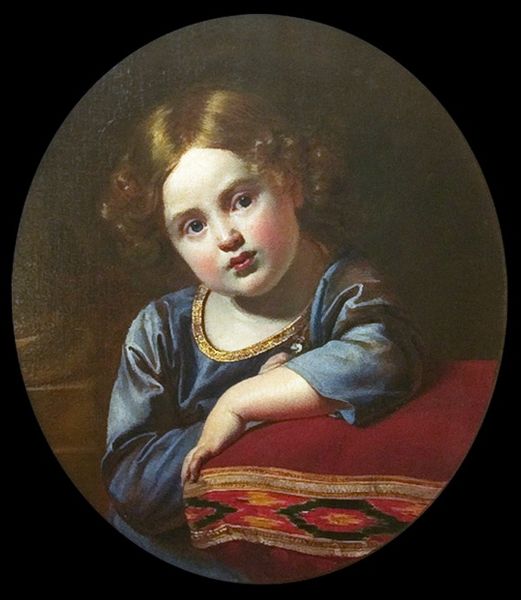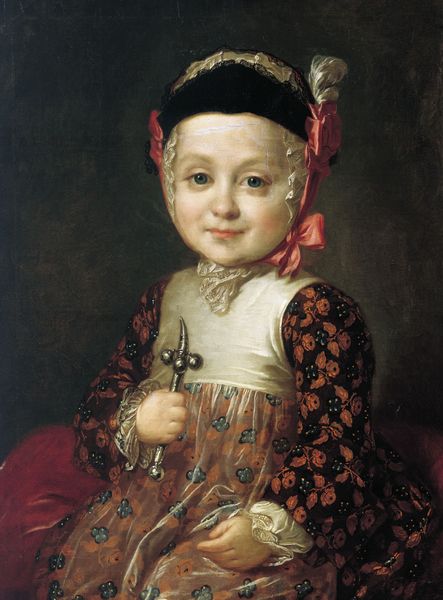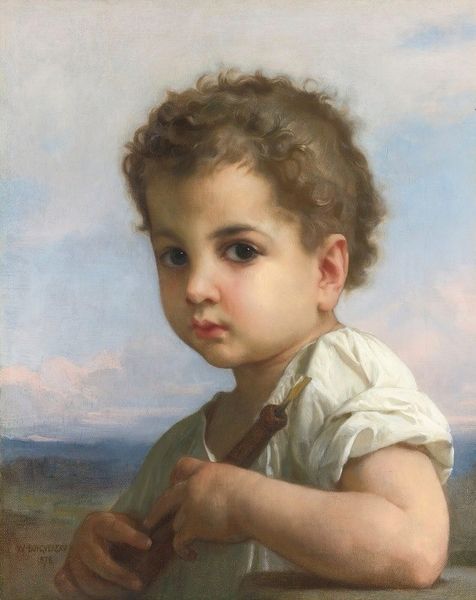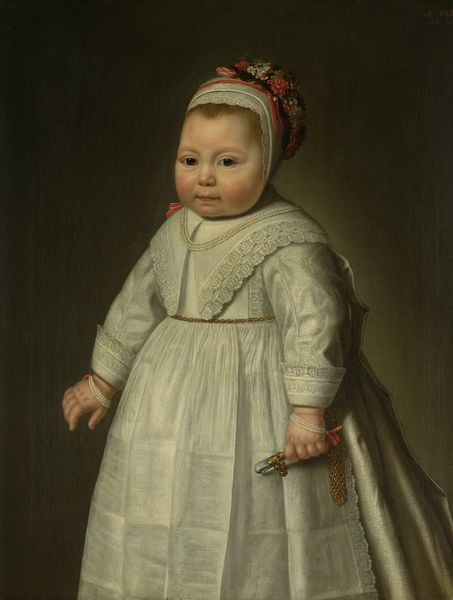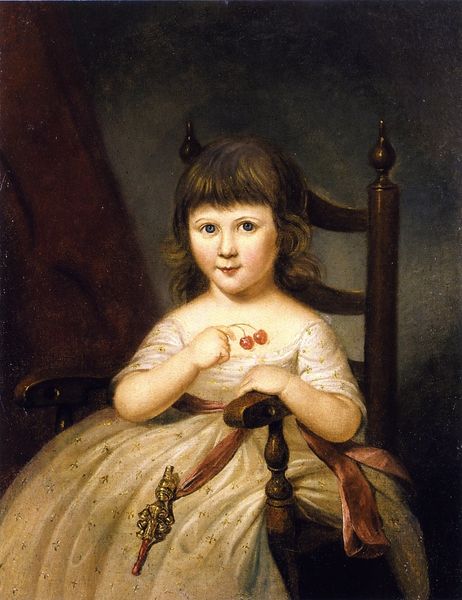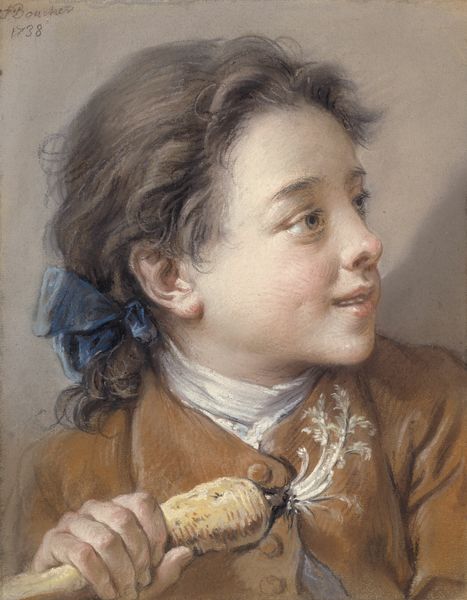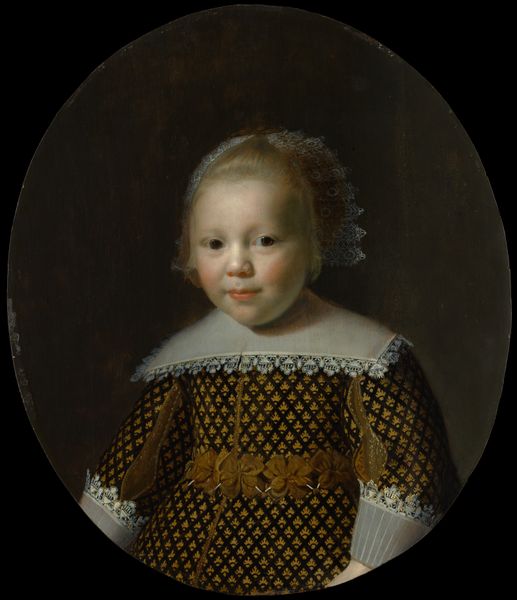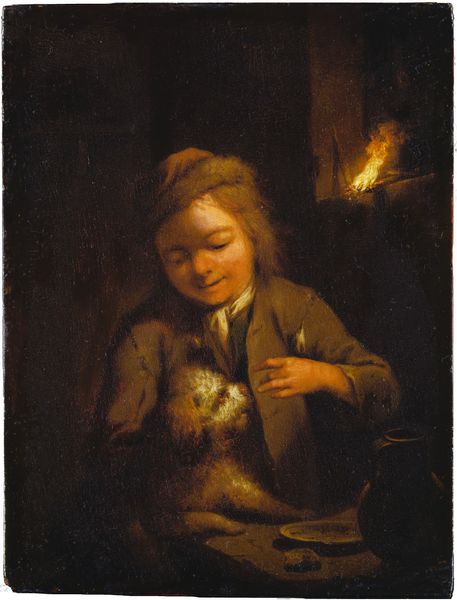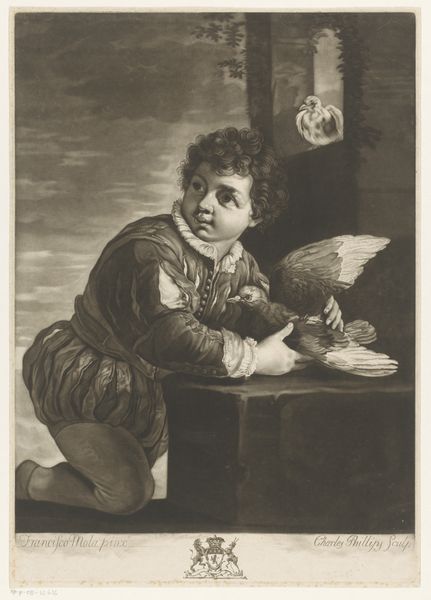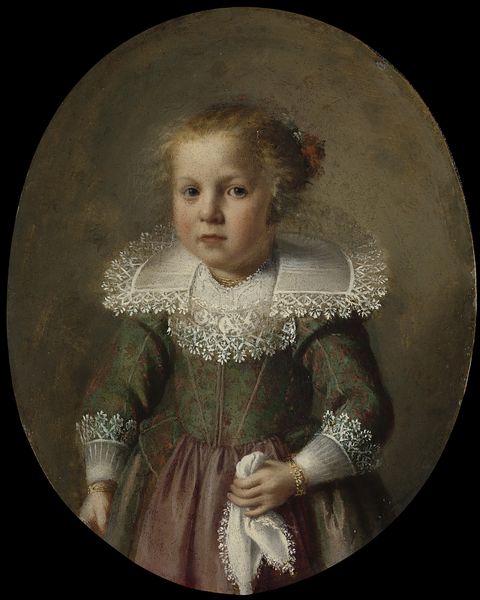
painting, oil-paint, canvas
#
portrait
#
baroque
#
painting
#
oil-paint
#
figuration
#
canvas
#
child
#
14_17th-century
Dimensions: 84.4 x 61.8 cm
Copyright: Public Domain
Curator: Standing here before "Madonna of the Yarnwinder," an oil-on-canvas work attributed to Juan de Ruelas in the 17th century and now part of the Städel Museum collection, what immediately strikes you? Editor: The cherubic quality—the sheer number of cherubs overhead, gazing down. It’s cloying, almost saccharine. Is this religious portraiture? Curator: Yes, the painting does feature traditional religious iconography, representing a young Madonna, perhaps emphasizing her purity. However, looking through a contemporary lens, this painting prompts several considerations regarding the commodification of girlhood within a patriarchal structure. The artist elevates youth while placing her in a setting imbued with an implied sense of duty. Editor: That reading certainly disrupts my initial reaction. Knowing this piece was produced during the Baroque period adds another layer. There’s this very public, performative aspect to religiosity. Art served to instill piety and obedience, after all. How might social institutions factor into how we interpret such imagery today? Curator: Exactly. How much did wealthy patronage, intertwined with powerful religious institutions, affect what and how art was produced and displayed? What did the representation of girlhood really mean in a world where power structures centered upon wealth and gender? The image hints at themes like forced labor through an economic lens, wherein the weaving of yarn turns into subjugated material value under socio-economic pressure. Editor: And consider the impact on viewers across centuries. Is piety the primary reaction now, or discomfort about that "yarnwinder" as an economic signifier you noted earlier? How is this historical artifact fueling conversation on women, girls and labor now, in our post #metoo world? Curator: Ruelas presents an intriguing example where period devotional painting, when seen with an understanding of socioeconomic-political forces, can encourage a new critical dialogue regarding the representation of children and labor within capitalism. Editor: It is precisely the painting's history and context that creates potential today—that allows such nuanced discourse across history, visual language, feminism, and class struggle to come to the surface. That said, for those sensitive to artistic expressions of childhood naivete, this might require additional sensitivity given our social and cultural moment. Curator: A very worthwhile thing to remember as we leave.
Comments
No comments
Be the first to comment and join the conversation on the ultimate creative platform.
